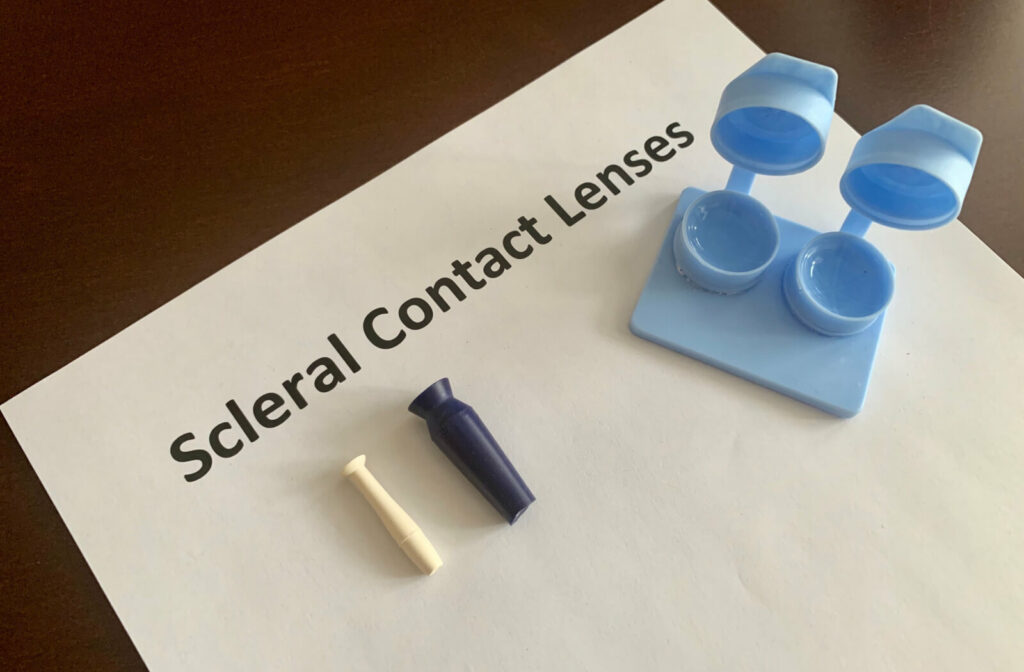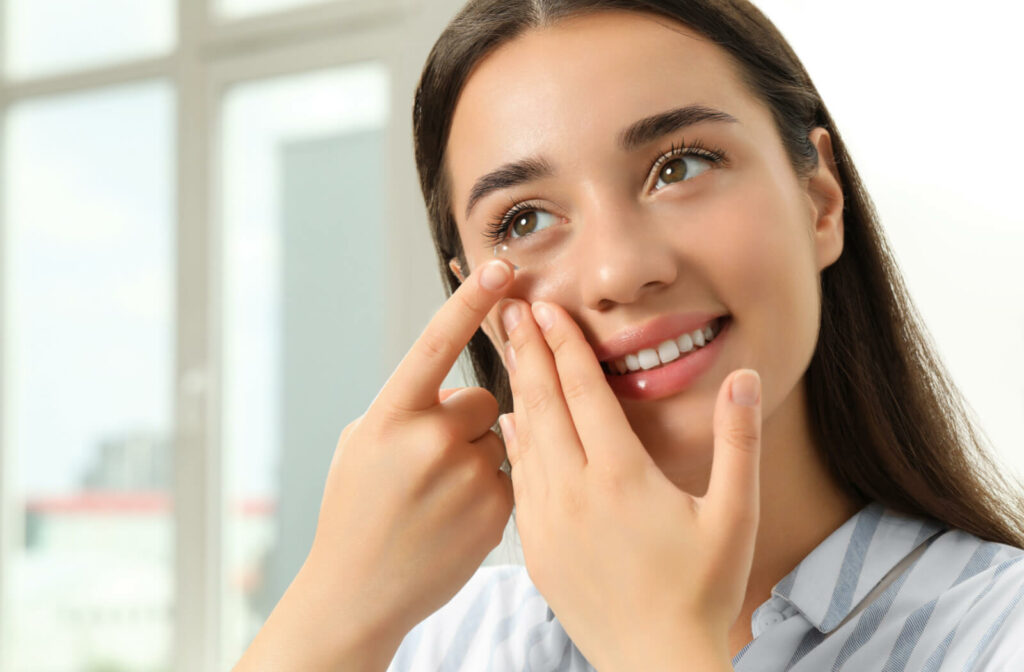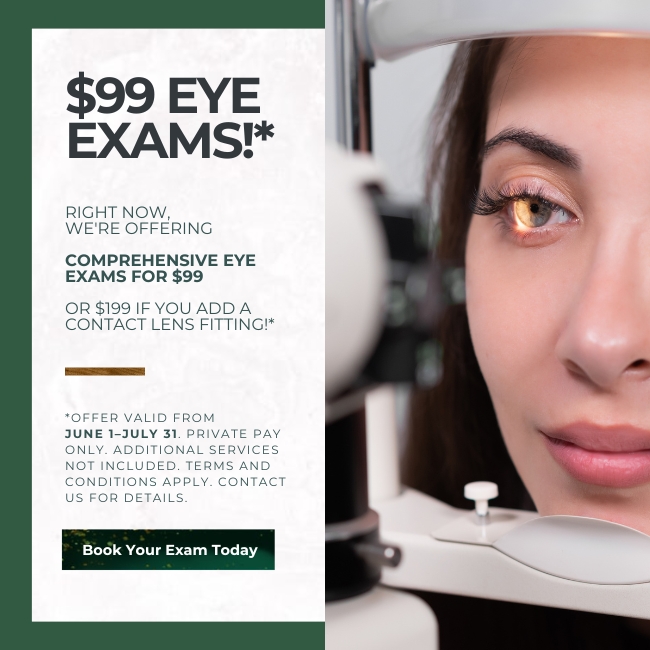Are you struggling with dry eyes? Are you tired of feeling like you have sandpaper rubbing against your eyes every time you blink?
Dry eye disease is a common condition caused by a lack of tears or poor-quality tears. Symptoms of dry eye disease can be uncomfortable and even more challenging if you’re a contact lens wearer.
But contact lenses can still be your go-to eye accessory, even with dry eyes. With innovative options available today, such as silicone hydrogel and scleral lenses, all you need is an eye exam and a contact lens exam to help your eye doctor find the right pair that works for you.
Dry Eye Disease Explained
Dry eye disease happens when your eyes don’t produce enough or poor quality tears, leaving your eyes feeling irritated, gritty, and just downright uncomfortable. When tear-producing glands in the eyes don’t function properly, it can lead to:
- Insufficient tear production
- Tears dry up too fast
- Imbalance in the tear film
Millions of Americans experience dry eyes, and while it can affect anyone, some people have more risk factors for developing dry eye, including those who:
- Are 50 or older
- Are Female
- Wear contact lenses
- Lack vitamin A or omega-3 fatty acids
Other factors that can cause dry eye disease can include:
- Certain medications
- Certain health conditions
- Laser eye surgery
- Environmental factors
- Prolonged screen time
Symptoms of Dry Eye Disease
Without enough good-quality tears, dry eyes can cause much discomfort and the following symptoms:
- Redness
- Burning or stinging sensation
- Blurred vision
- Scratchy feeling
- Sensitivity to light
Contact Lenses & Dry Eye
Wearing contact lenses for long periods can cause contact lens discomfort (CLD) and contribute to dry eye, called contact lens-associated dry eye disease. Many people may prefer contact lenses over eyeglasses, but nobody wants to deal with contact lens-related dry eyes.
Whether you’re new to the world of contact lenses or a seasoned wearer, luckily you can battle this problem by changing to a different type of lens that caters to dry eyes.

Contact Lenses for Dry Eye
Let’s dive into the world of contacts and explore the best ones to keep your eyes feeling refreshed and revitalized.
Soft Contact Lenses
Soft contacts are flexible plastic lenses that allow oxygen to pass through and have hydrogel that contains water. They come in daily disposables worn for a day and then thrown away to help prevent protein deposit buildup and dry eyes. Extended wear soft lenses are also available.
Silicone-based hydrogel lenses don’t allow water to evaporate as readily as others. Compared to soft hydrogel lenses, they may help reduce symptoms of dry eyes better.
Because soft contact lenses differ in how much water they contain, it’s important to note that high-water content lenses can cause dry eye more easily than those with low water content. Although they initially have more moisture, they can dry out faster.
Scleral Contact Lenses
Scleral contact lenses cover the sclera (white part of the eye) and vault over the cornea, which creates a fluid reservoir to improve moisture. Scleral lenses allow oxygen to reach the eye’s surface, while the shape can help keep the contact lens in place for more comfort.
Reducing Dry Eye Symptoms with Contacts
You can reduce contact lens-related discomfort by ensuring you have the right fit and type of contact lens for your eyes. But how you care for your contact lenses can also impact your vision and comfort.
Here are some tips on how to care for your contact lenses:
- Keep your contact lenses clean.
- Change your contact lenses as recommended.
- Only wear your contact lenses for the prescribed time.
- Use rewetting drops to moisten your eyes before putting in your contact lenses.
- Use rewetting drops throughout the day or as needed to keep them moist.
- Change to a preservative-free contact lens solution.
- Change your contact lens solution daily.
If you still have irritation after trying these tips, you may need to remove your contact lenses and stop wearing them. You can use preservative-free artificial tears to rehydrate the eyes, and visit your eye doctor to determine the cause of your discomfort.
Contact Lens Comfort for Dry Eyes
Dry eyes may be a nuisance, but they don’t have to rule your life, and you don’t have to give up wearing contact lenses. At Pacific Pier Optometry, our team can help you find the right lenses for your needs with a contact lens exam and fitting.
When you book an appointment, we can provide options to help combat the discomfort of dry eyes and keep your eyes feeling healthy, so you can wave goodbye to redness and irritation and say hello to clear, comfortable vision.



